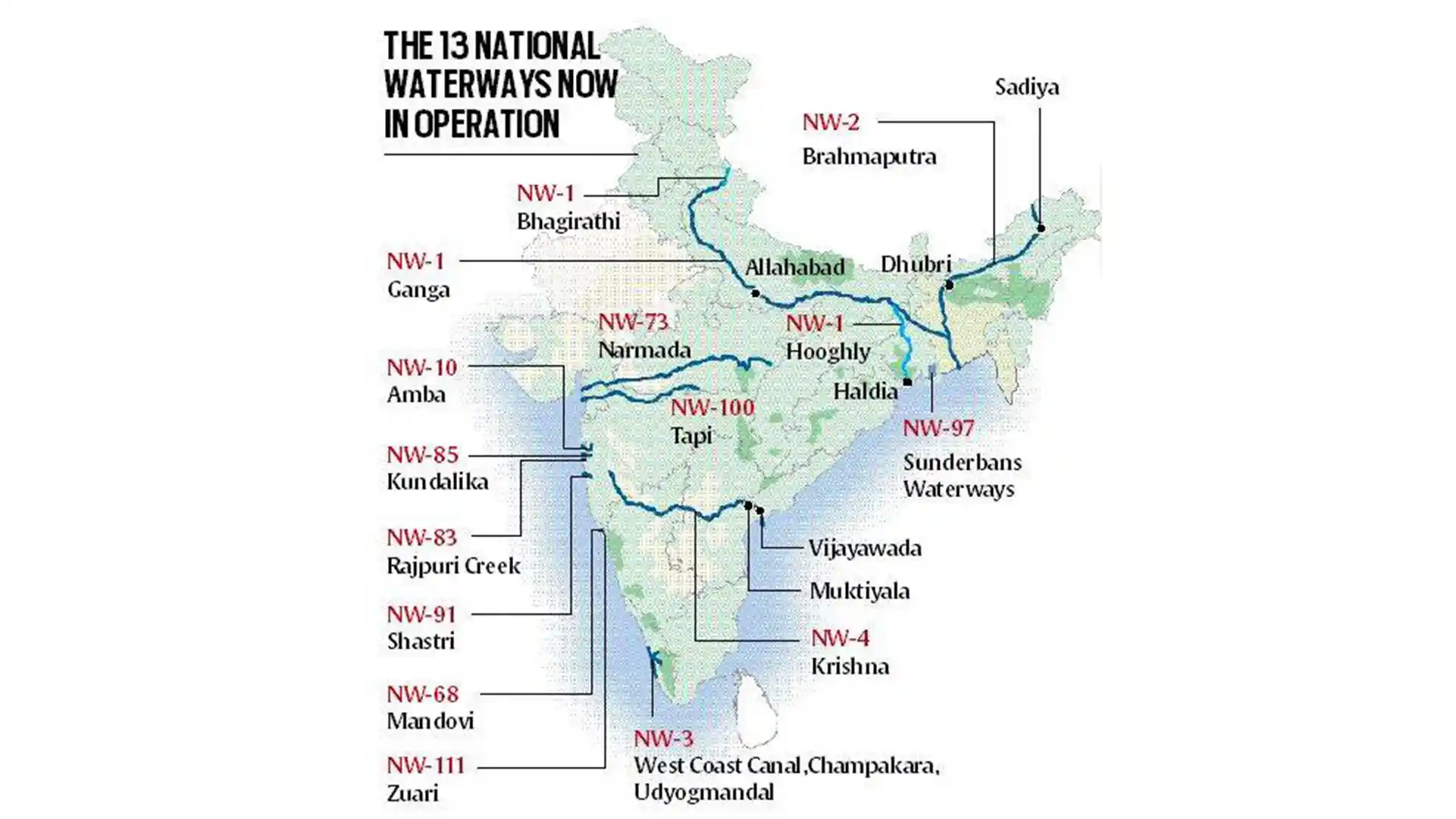Table of Content:
- National Waterways In India: An Overview
- Operational National Waterways In India
- Longest Waterway in India
- National Waterways in India: Latest Updates
- National Waterways in India: Benefits
India, a land of diverse landscapes and abundant water resources, has long recognized the importance of its waterways. With an extensive network of rivers, canals, and lakes, the national waterways in India plays a significant role in the maritime development of the country as well as serve as an efficient, environment-friendly mode of transport to the affected cities.
Deep dive into our innovative article to discover more about the operational national waterways in India.
National Waterways In India: An Overview
In recent years, the government has undertaken several initiatives to develop and promote inland waterways in India so as to harness their potential to boost transportation, trade, tourism, and environmental sustainability.
India's Prime Minister laid the foundation for inland waterways projects of more than Rs 1000 crore on January 13, 2023. Around 111 inland waterways in India have been recognized as "national waterways". However, only a few of them are operational for the required purposes.
The Inland waterways in India are obligated to ensure on-time delivery of National Waterways Projects and to monitor better transportation in India. National waterways are used to navigate the shipment of cargo or passengers. Only a few states, i.e., Assam, Goa, West Bengal, and Kerala, have waterways that have organised cargo transportation.
Operational National Waterways In India

Source: Drishtiias
As per the press release by the Ministry of Ports, Shipping, and Waterways, out of the 111 national waterways, 13 are operational for shipping and navigation. The list of active national waterways in India is mentioned below.
| National Waterway 1 | Ganga-Bhagirathi – Hooghly River System (Haldia – Allahabad) 1620 km | Uttar Pradesh, Bihar, Jharkhand, West Bengal |
National Waterway 2 | Brahmaputra River from Dhubri to Sadiya (891 km) | Assam |
National Waterway 3 | West Coast Canal (Kottapuram – Kollam), Champakara and Udyogamandal Canals, 205km | Kerala |
National Waterway 4 | Phase – 1 development of the stretch Muktiyala to Vijayawada of river Krishna, 82 km | Andhra Pradesh |
National Waterway 10 | Amba River | Maharashtra |
National Waterway 83 | Rajpuri Creek | Maharashtra |
National Waterway 85 | Revadanda Creek – Kundalika River System | Maharashtra |
National Waterway 91 | Shastri river – Jaigad creek system | Maharashtra |
National Waterway 68 | Mandovi – Usgaon Bridge to the Arabian Sea 41 km | Goa |
National Waterway 111 | Zuari from Sanvordem Bridge to Marmugao Port 50 km | Goa |
National Waterway 73 | Narmada river | Gujarat |
National Waterway 100 | Tapi river | Maharashtra |
National Waterway 97 or Sunderbans Waterways | Namkhana to AtharaBankiKhal in West Bengal | West Bengal (via Indo-Bangladesh Protocol Route) |
Also Read: Longest Expressway in India: Route, Map, Key Features & Toll Rates
Longest Waterway in India
National Waterway 1 - Ganga-Bhagirathi-Hooghly River System
Stretching from Haldia to Varanasi NW-1 is the longest waterway in India. It connects major industrial and urban centres, including Kolkata, Patna, and Allahabad. The development work concerning the waterway has already commenced, with plans to make it navigable throughout the year.
National Waterways in India: Latest Updates
According to the Union Cabinet Minister, Ministry of Ports, Shipping, and Waterways, Sarbananda Sonowal, the government will convert Jawaharlal Nehru Port into a fully smart port within a year.
As per the reports, he added that the administration wants to completely connect the system to the electronic system for better services. The minister added that 29 industrial units have been built under the Sagarmala Project's Special Economic Zone (SEZ) of the Jawaharlal Nehru Port Authority (JNPA).
Incorporating the port's land use plan, the JN Port is building the SEZ project at JNPA as part of the port-led industrialization plan on 277 hectares of freehold property.
National Waterways in India: Benefits
The development of National Waterways in India has provided us with a more eco-friendly alternative mode of transportation. It has reduced the burden of relying on and travelling on roads and railways.
It enables the cost-effective movement of goods, including heavy cargo, over long distances, contributing to lower logistics costs and faster delivery.
These waterways have enhanced India's connectivity to various industrial hubs, ports, and inland markets, which has boosted economic activities, trade, and regional development.
These waterways have the potential to promote tourism and leisure activities. Apart from this, people enjoy scenic river cruises, which showcase India's rich cultural heritage.
The development of National Waterways in India has led to a transformative step towards enhancing transportation efficiency, fostering economic growth, promoting sustainable tourism, and reducing environmental impact.
Also Read: Union Budget 2023: Will Inflation, Economic Growth, & Real Estate’s Growth Be Addressed?